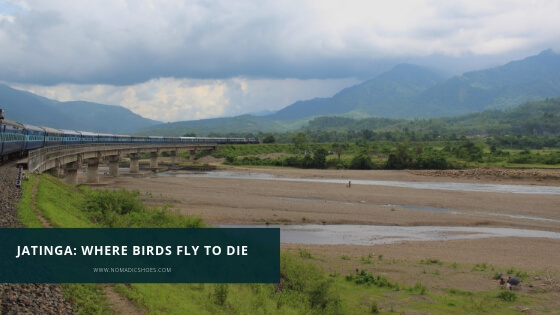
Remember the Hitchcock flick, ‘The Birds’? – Jatinga would have been the perfect spot for the plot. When I heard about Jatinga, the first thing that crossed my mind was the climax of ‘The Birds’. An unexplained and bizarre suicide attack by birds on the inhabitants of Bodega.
In the early days of 20th century, a flock of birds flew right into the bonfires (to scare off wild-pigs) lit by locals in Jatinga. The early tribal settlers of Jatinga – Zeme Nagas, were terrorised to see birds dropping dead in front of them. They thought a demonic force was punishing them for taking over the land. So they abandoned Jatinga in 1905 to avoid the wrath of the spirits.
This is the earliest memory of this bizarre phenomena amongst the locals. When I visited Jatinga in June, I couldn’t believe that this quaint village is the suicide spot for many avian flocks over the last century.

One man’s loss is another man’s gain
Zeme Nagas sold off their land to the Jaintia tribe who made the best use of the bird-suicide phenomenon. Instead of worrying about the curse, they captured the dazed birds with long bamboo poles & sticks – dinner was sorted!
It was E. P. Gee, a naturalist who first wrote about the mass bird suicide in his book ‘Wildlife of India’ and brought this occurrence to global notice. Ornithologists have identified a total of forty four species of birds that gets affected by this so-called suicidal phenomenon. Tiger Bittern, Black Bittern, Little Egret, Pond Heron, Emerald Dove, Green Pigeon, Indian Pitta and Kingfishers are some bird species who meet their self-destructive urge at Jatinga.
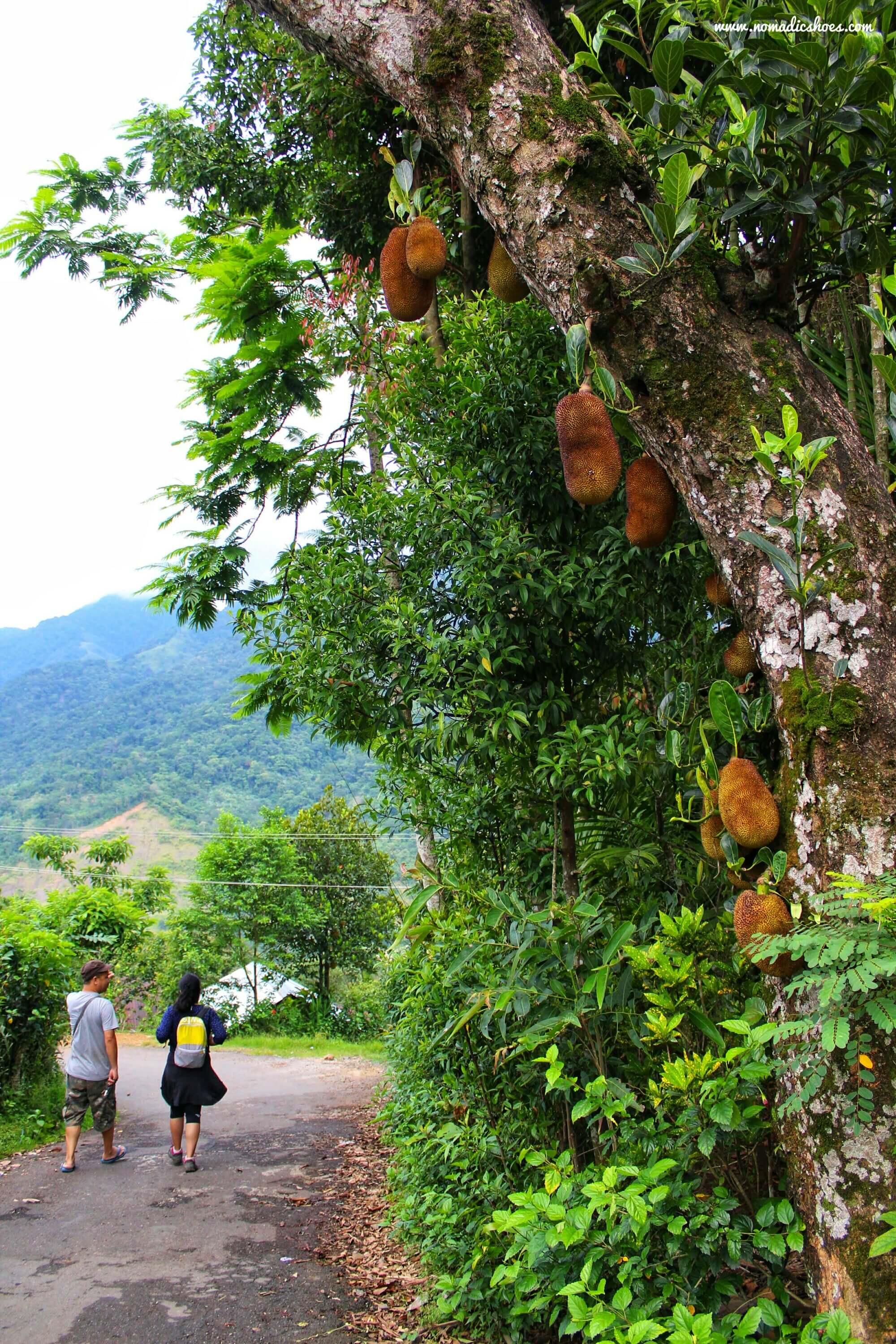
The Reason Behind Mass Bird Suicides in Jatinga
Jatinga’s mass (bird) suicides occurs when the air current flowing from South-West to North-East, reverses its direction over Borail valley. This horrible event usually happens between the months of August to October, under very specific conditions.
It has to be a moonless night with mist & drizzle, the wind in reverse direction and a specific time slot of 6 pm to 9.30 pm. It is at this hour that Jatinga translates into a perfect crime spot. The weather conditions disorient the birds. They then fly towards the only light source – the village, and ends up crashing into homes & bonfires.
However, the natives have reformed over time, refraining themselves from killing the birds for food & trying hard to save them from crashing into their homes. The tourism department of Assam has also set-up a watchtower and a museum (at Muolpong, Jatinga) with details on this rare occurrence.
Why visit Jatinga?
I wouldn’t visit this place in August, up until October, when the birds die. I find it a bit sadistic. But when you are in Haflong, you should surely visit this village. It is a living proof of the mysterious ways of Mother Nature.
In a beautiful, lush green valley, this small village is the only place where a wicked natural phenomena occurs. To top it off, the region around Jatinga was once the hot bed of insurgency and countless acts of violence. Is this place really cursed?
I wouldn’t know. But I did see a tribe that survived over a century – an account of persistence & resilience. Inspiring much?
If you are heading to Jatinga, scroll down for a ‘quick-guide’ on things you should know to plan your trip 🙂
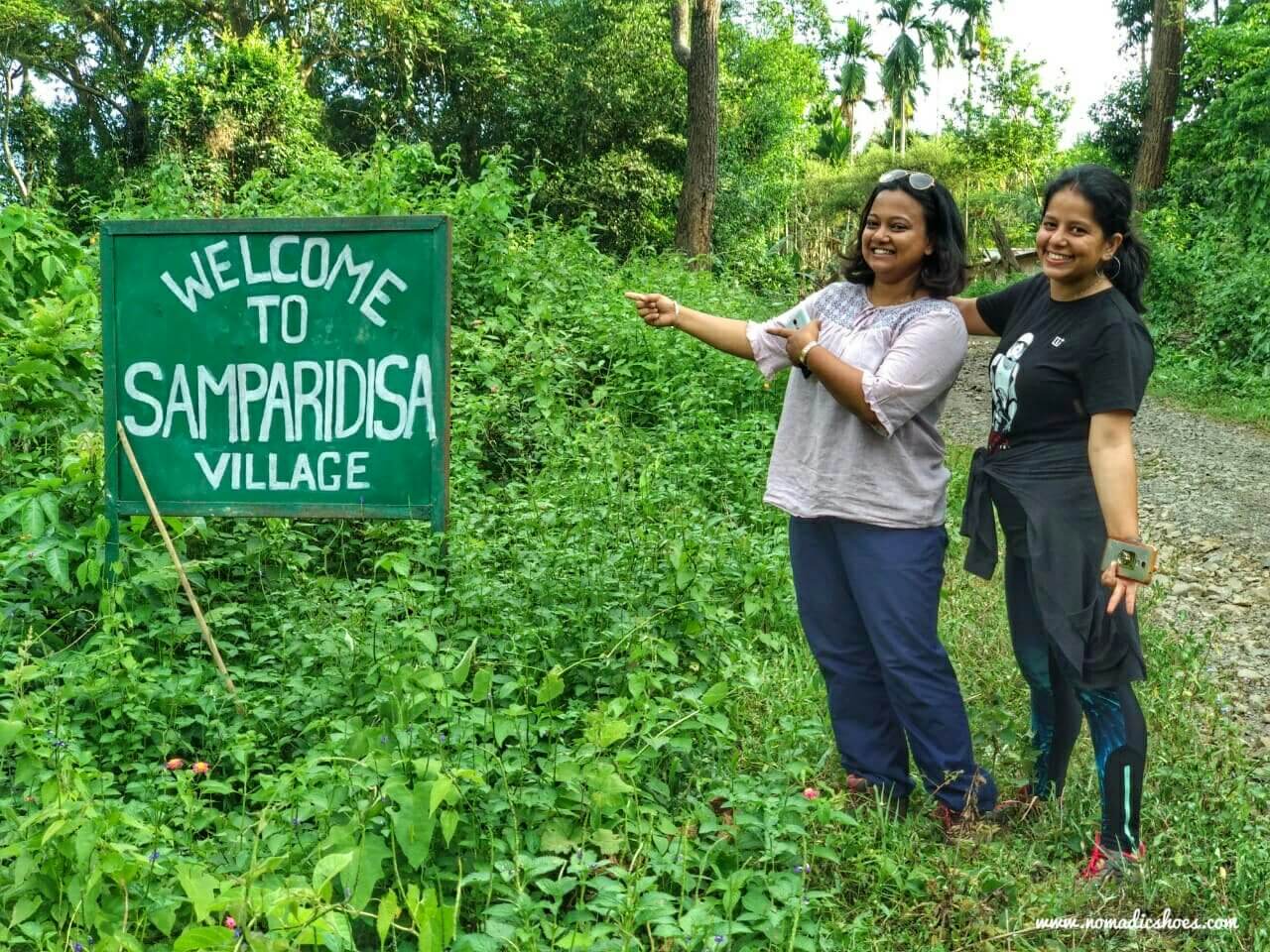
Entry point of Samparidisa village in Dima hasao region in Assam 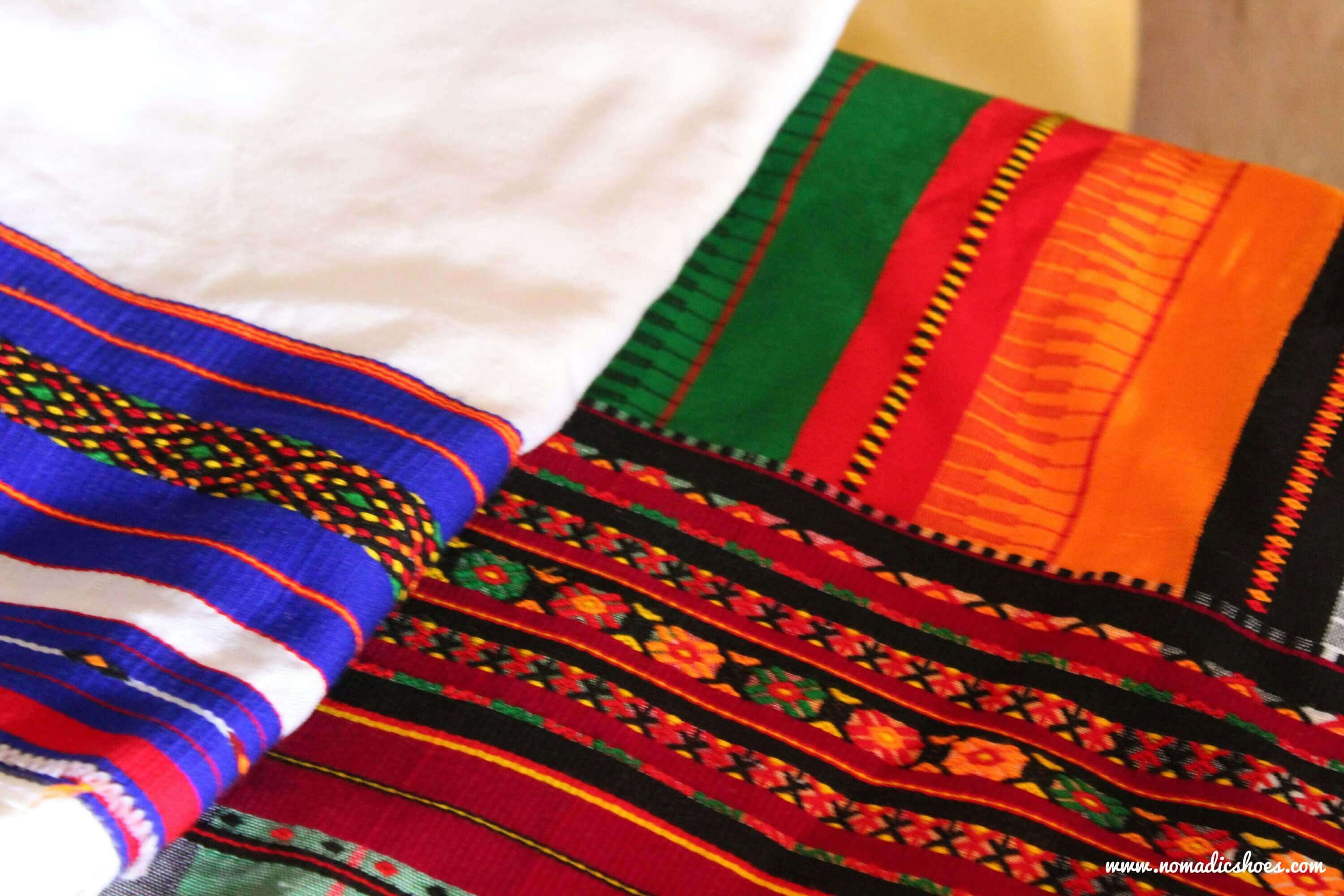
Traditional designs from Dima Hasao handlooms 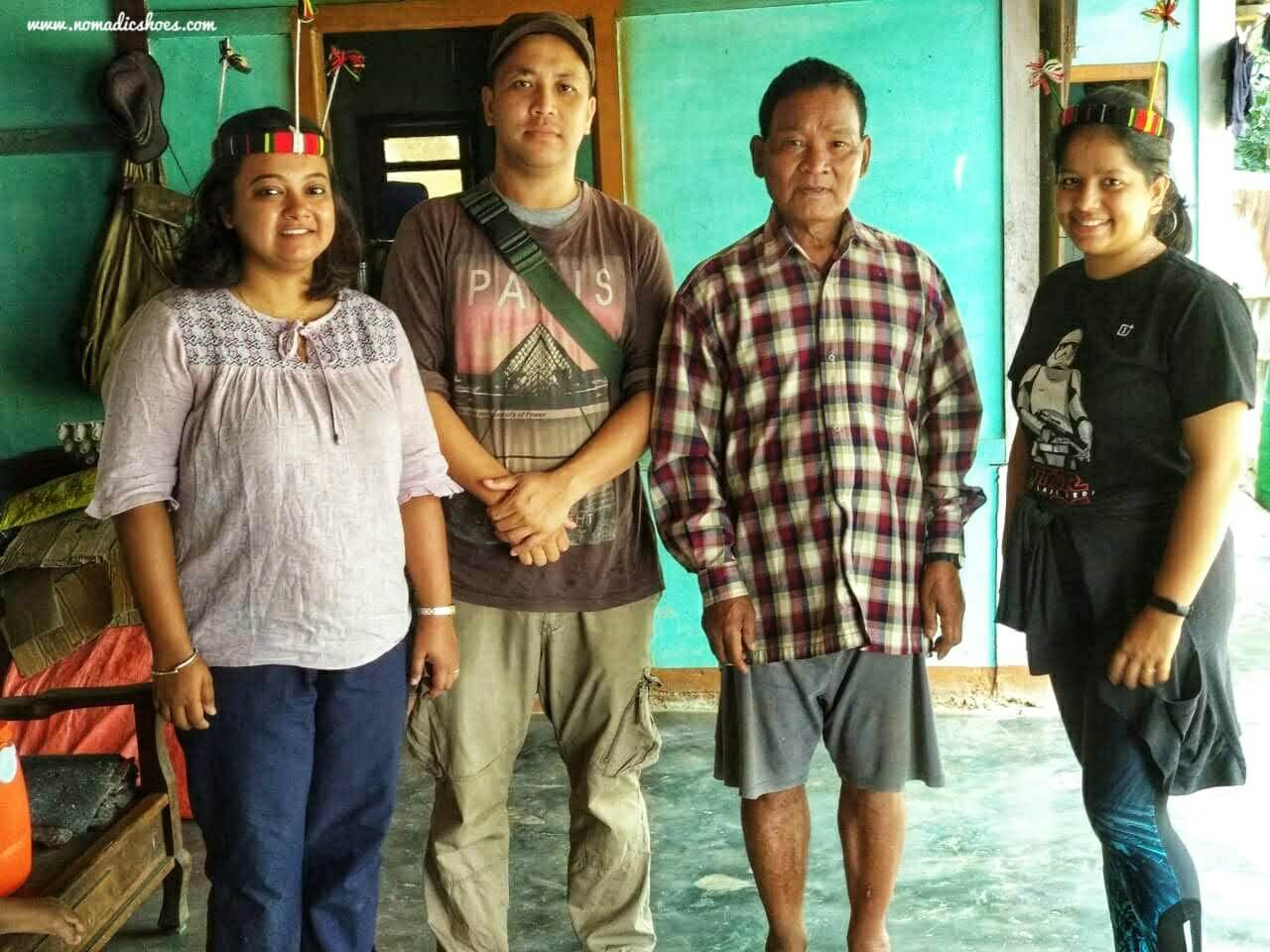
Interaction session with the tribal chief of Doiheng Village in Assam 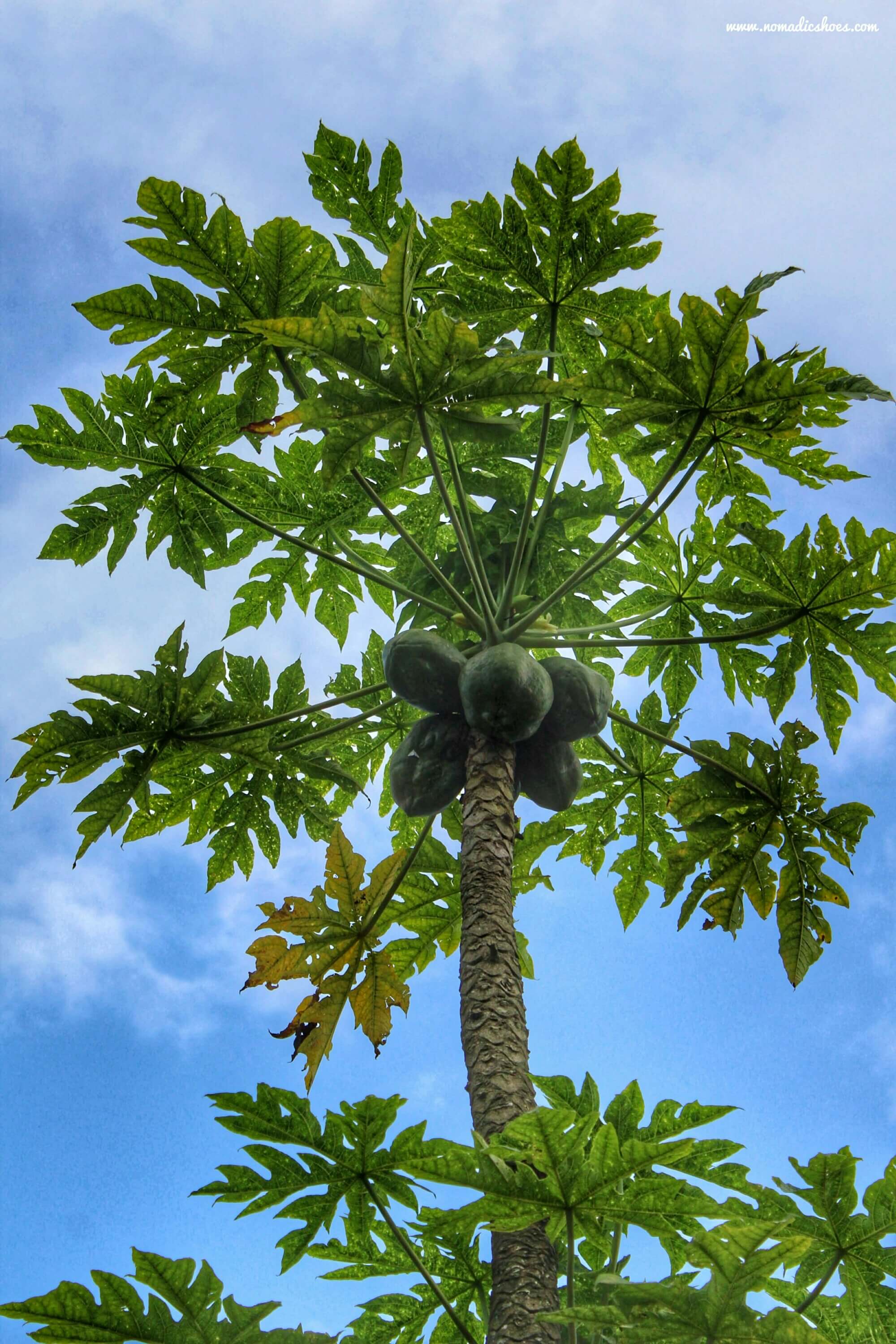
Papaya Tree in Jatinga 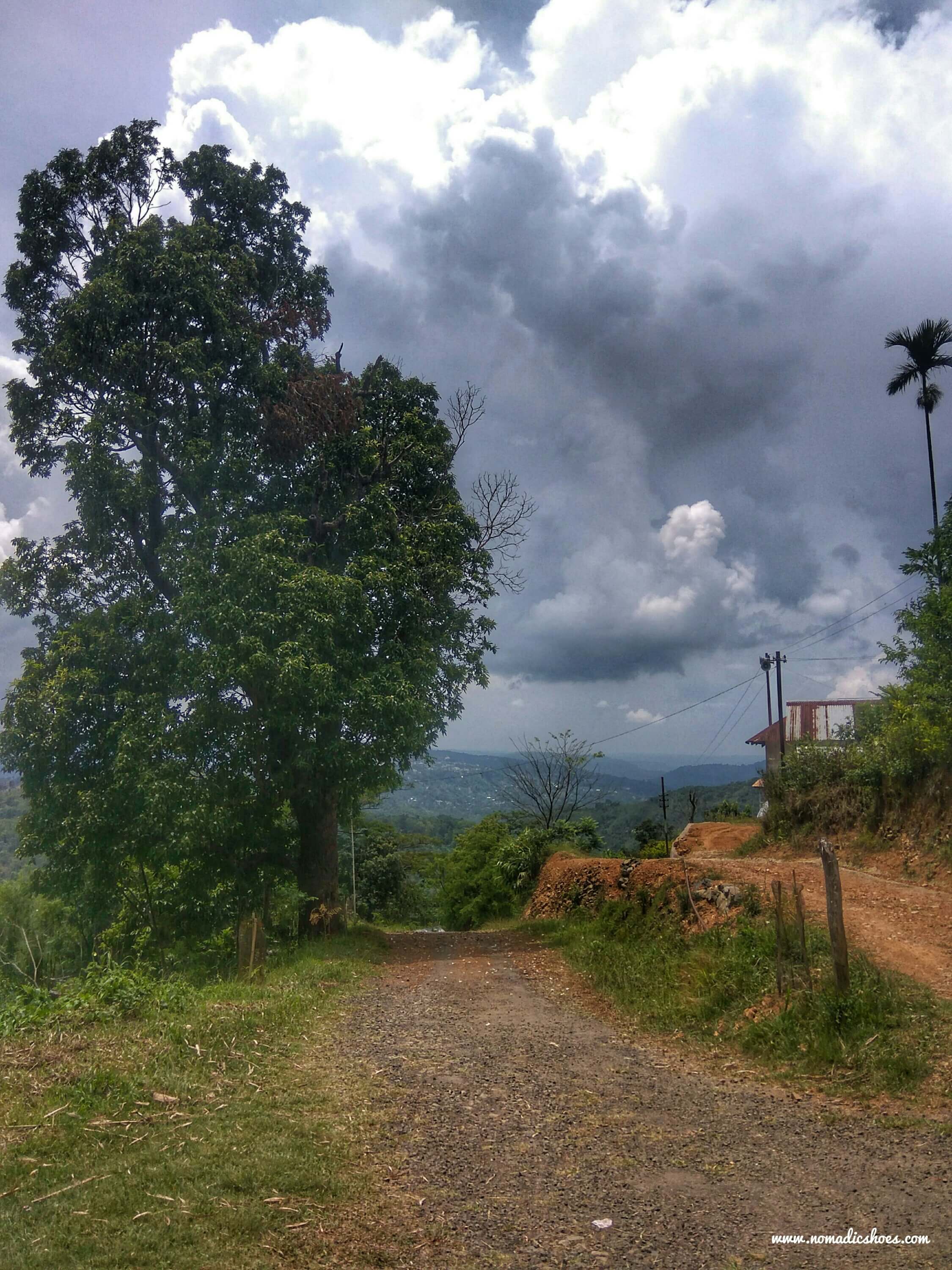
Village walk in Jatinga
Important Information about Jatinga
- Best Time to go: June to October (because of the weather)
- How to reach: You can take a train from Guwahati to Haflong, Jatinga is around 8-10 kms from the railway station. Local buses are available from Silchar, but the road conditions are usually bad.
- Where to stay: There is no place to stay in Jatinga, but one can stay in Haflong town which is 9 Kms from the village. We stayed at Nathao Lodge [91+94354 48680]. There is also a Landmark Hotel, Nhoshring Guesthouse and Hotel Joyeswary [91+9957155294].
- Guided Tour: We traveled with Greener Pastures. They conduct guided tours of Jatinga, villages in Dima Hasao region – Samparidisa, N.Leikul, Sikui-rooi, Doiheng, etc. Our guide, Mr. Bankim Haflong was not only knowledgeable, but also resourceful. He was familiar with all the folks in these villages. It was easier to move around Dima Hasao region with a guide like Bankim. He knew the best places to see and to take a quick pic. He also took us to houses of Tribal Heads, where we interacted with them and talked about Jhum cultivation, religious and tribal traditions, weaving practices and environmental issues.









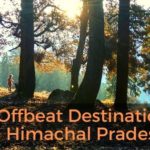

I’ve heard of whales beaching themselves en masse but not birds flying to their deaths. So sad since I love birds. Strange thing about the weather that disorients them!
I was shocked too to know about this phenomenon.
I remember reading about this on the ‘Strange Phenomenon LIst’ in one of the books.It indeed is quite sad. I may actually never be able to witness that but the place looks beautiful!
Same here I will never visit during that time of the year.
Have read about the strange phenomenon of the mass harakiri of birds in Jatinga. The phenomenon though morbid is definitely intriguing. It is heartening to note that the villagers now do not consider the dead birds as dinner and instead try to save them. But the village looks picturesque and worth a visit even otherwise.
Yes, the village is beautiful indeed.
One of the most fascinating posts I’ve read for such a long time, I had never heard about this natural phenomenon of the many species of birds, in this one location, so it was really interesting to read about it, how the locals have reacted in the past and now, and the scientific causes of the occurence!
Thank you for reading.
Wow- I’ve never heard of this! I personally am scared of birds so I dont think I will be visiting Jatinga anytime soon!
Jatinga shares a very interesting history. Seriously, is the place cursed? It has faced such bad times. But I hope it prospers now. Glad that you have visited this place and opened the gate of tourism so many people can visit. Such a pretty place!
Thanks for sharing your wonderful posts from North East India and also for taking me along on this trip. Reading this took me down the memory lane and I can’t wait to see more such hidden/unpopular gems in Assam and other North Eastern States. Be back soon?
What an interesting and yet sad tale too! I’ve never been to india never heard of Jatinga before. Thanks for bringing it to my attention.
India is full of surprises, you must plan for India soon.
Beautiful! I knew about this strange natural phenomenon from a book by Sunil Ganguly’s Kakababu series! Thank you for reviving the memory! I followed your travel in instagram, always a pleasure! 🙂
Thank you dear. I am following your Durga Puja posts too on Instagram
This is in the same time fascinating and sad. I would like to visit this place one day.
Do that, plan for India.
That is so interesting! I loved reading how in the olden times they thought it was a demonic power making them do it but then they found out that it was the weather condition that disorients them. Also, so nice that instead of cooking them for dinner, the village residents decided to find ways to save them. Such an intriguing phenomena, I had never heard about this.
Awareness has been created by some NGOs and the govt.
Fascinating and a bit sad. So glad they’re preventing bird deaths instead of encouraging them nowadays.
Yes, all thanks to govt awareness plans.